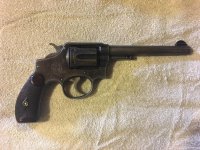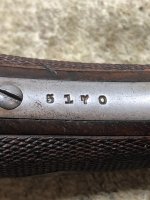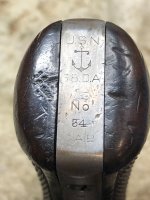DEL56
Member
I know there were 1,000 1899 M&P shipped to the US Navy and they are #5001-6000. Then there were 1,000 1902 M&P shipped to the US Navy and they are #25001-26000. I also know the USMC used a lot of the US Navy weapons. Such as the Winchester Lee 236 for rifles etc. I would also assume, and that is where you get in trouble, that the USMC would have possibly been issued some of these S&W M&P's. I have not found any place mentioning this or any photographic evidence one way or the other. Do any of you guys have any ideas if the USMC did have any of these S&W's, or not, I would love to hear from you with any possible evidence. I am not 100% sure what the Navy did with them after receiving them into inventory. I know some went on board ships, but that is the extent of what I have heard.









